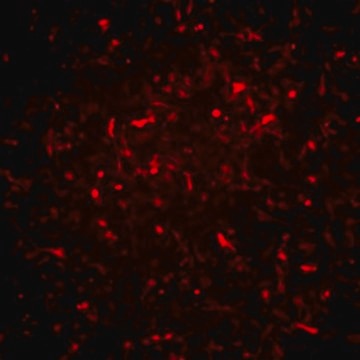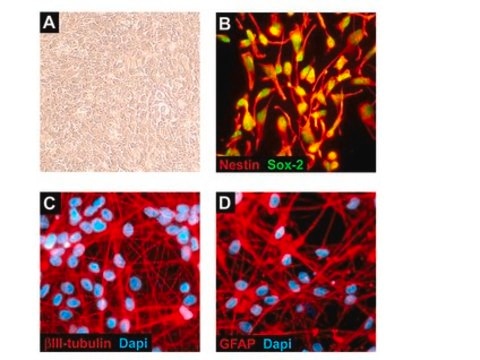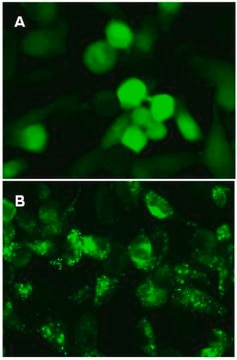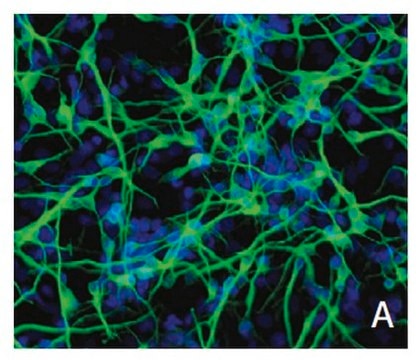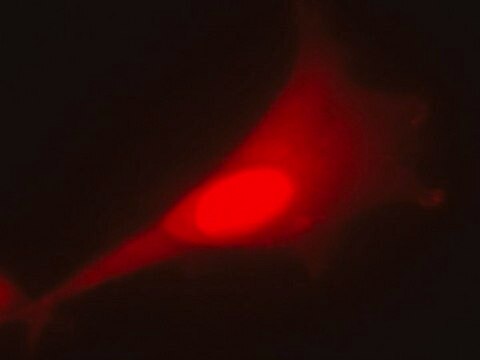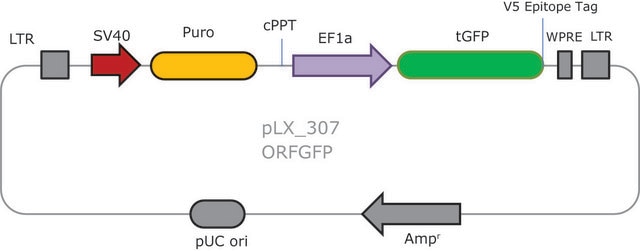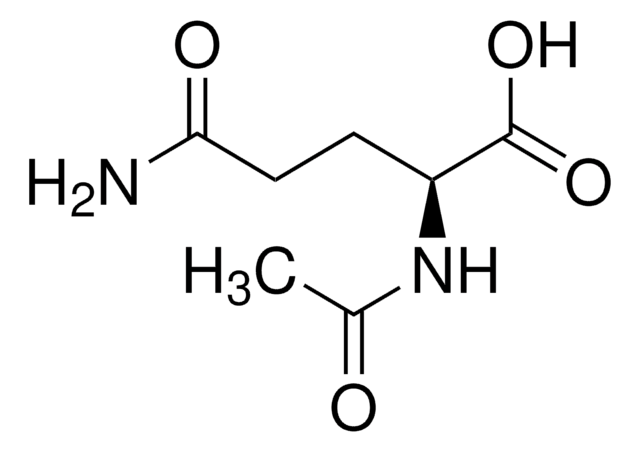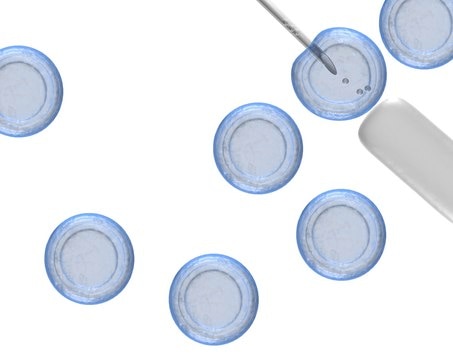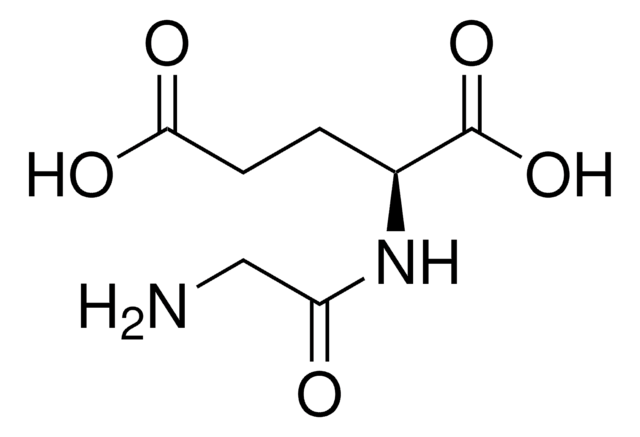SCR526M
Alzheimer′s In A Dish™ APPSL-GFP Lentivirus
Synonym(s):
APPSL-GFP , ReNcell 3D Alzheimers Model, ADID 3D Neural Cell Model
Sign Into View Organizational & Contract Pricing
All Photos(1)
About This Item
UNSPSC Code:
12352207
eCl@ss:
32161000
Recommended Products
species reactivity
human
Quality Level
technique(s)
cell culture | mammalian: suitable
cell culture | stem cell: suitable
cell differentiation: suitable
General description
Amyloid-beta plaques and neurofibrillary tangles are key pathological features observed in the brains of Alzheimer’s patients. Familial, early onset forms of AD (FAD) are caused by autosomal dominant inherited genetic mutations and offer an opportunity to study the effects of key mutations on the diseases progression and pathology. To date, approximately 200 FAD mutations in APP and/or PSEN1 have been reported. Transgenic mouse models and human neurons harboring FAD mutations in PSEN-1 and/or APP are widely used as model systems and have provide important insights into the disease. Transgenic mouse models are able to recapitulate the loss in cognitive functions along with increased deposition of b-amyloid plaques, but are unable to demonstrate neurofibrillary tangles, one of the key pathological hallmarks of AD. Similarly human iPSC-derived neurons from FAD patients demonstrated increased levels of the pathogenic AB species and phosphorylated tau, but lack the characteristic amyloid-beta plaques and neurofibrillary tangles.
Recently a 3D model using genetically engineered human neural stem cells that overexpress FAD mutations was reported to recapitulate the two pathological hallmarks of AD: b-amyloid plaques and neurofibrillary tangles. Lentiviruses expressing FAD mutations in human APP with both the K670N/M671L (Swedish) and V717I (London) mutations (APPSL) and/or PSEN1 with the E9 mutation (PSEN1(E9)) and APPSL/PSEN1(E9) along with fluorescent proteins as reporters for viral infection (see below), were used to transfect ReNcell VM human neural stem cells. FACS was utilized to enrich for cells with the highest transgene expressions followed by encapsulation of the sorted cells in a 3D Matrigel culture system. After approximately 6 weeks of differentiation, aggregation of AB was observed. Robust accumulation of phosphorylated tau along neurofibrillary tangles was readily detectable after 10-14 weeks.
The Alzheimer’s In A Dish<TMSYMBOL></TMSYMBOL> APPSL-GFP Lentivirus is a necessary reagent to set up the Alzheimer’s 3D culture system. The lentivirus contains the APPSL FAD mutations and can be used to infect human neural cells. The TagGFP2 tag enables assessment of viral infectivity and allows FACS sorting of the highest expressing cells.
Recently a 3D model using genetically engineered human neural stem cells that overexpress FAD mutations was reported to recapitulate the two pathological hallmarks of AD: b-amyloid plaques and neurofibrillary tangles. Lentiviruses expressing FAD mutations in human APP with both the K670N/M671L (Swedish) and V717I (London) mutations (APPSL) and/or PSEN1 with the E9 mutation (PSEN1(E9)) and APPSL/PSEN1(E9) along with fluorescent proteins as reporters for viral infection (see below), were used to transfect ReNcell VM human neural stem cells. FACS was utilized to enrich for cells with the highest transgene expressions followed by encapsulation of the sorted cells in a 3D Matrigel culture system. After approximately 6 weeks of differentiation, aggregation of AB was observed. Robust accumulation of phosphorylated tau along neurofibrillary tangles was readily detectable after 10-14 weeks.
The Alzheimer’s In A Dish<TMSYMBOL></TMSYMBOL> APPSL-GFP Lentivirus is a necessary reagent to set up the Alzheimer’s 3D culture system. The lentivirus contains the APPSL FAD mutations and can be used to infect human neural cells. The TagGFP2 tag enables assessment of viral infectivity and allows FACS sorting of the highest expressing cells.
Application
Research Category
Stem Cell Research
Neuroscience
Stem Cell Research
Neuroscience
Components
APPSL-GFP Alzheimer’s Lentivirus: (Part No. CS222734) One (1) vial containing 15 µL of high titer lentiviral particles. Store at -80°C.
Note: For exact viral titer, refer to the label on the vial.
Note: For exact viral titer, refer to the label on the vial.
Quality
The packaged lentivector constructs are provided as frozen VSV-G pseudotyped viral particles. The titer (ifus/ml) is defined by SBI’s Global UltraRapid Lentiviral Titer Kit (Cat. # LV961A-1) in HT1080 cells transduced by the packaged constructs.
Storage and Stability
Storage and Handling
Lentivirus is stable for at least 6 months when stored at -80°C. After first thaw, place immediately on ice and store in working aliquots to avoid further freeze thaws. Avoid freeze thaws as this will result in a decrease in the virus titer.
Important Safety Note:
• Replication-defective lentiviral vectors are not known to cause any diseases in humans or animals. However, lentiviruses can integrate into the host cell genome and thus pose some risk of insertional mutagenesis.
• Wear gloves when using this product. Avoid skin contact or ingestion of all reagents and chemicals used in this protocol.
• Lentivirus is a risk group 2 and should be handled under approved Biosafety Level 2 (BSL2) controls.
Lentivirus is stable for at least 6 months when stored at -80°C. After first thaw, place immediately on ice and store in working aliquots to avoid further freeze thaws. Avoid freeze thaws as this will result in a decrease in the virus titer.
Important Safety Note:
• Replication-defective lentiviral vectors are not known to cause any diseases in humans or animals. However, lentiviruses can integrate into the host cell genome and thus pose some risk of insertional mutagenesis.
• Wear gloves when using this product. Avoid skin contact or ingestion of all reagents and chemicals used in this protocol.
• Lentivirus is a risk group 2 and should be handled under approved Biosafety Level 2 (BSL2) controls.
Legal Information
Alzheimer′s in a Dish is a trademark of The General Hospital Corporation
Storage Class
12 - Non Combustible Liquids
wgk_germany
WGK 2
flash_point_f
Not applicable
flash_point_c
Not applicable
Certificates of Analysis (COA)
Search for Certificates of Analysis (COA) by entering the products Lot/Batch Number. Lot and Batch Numbers can be found on a product’s label following the words ‘Lot’ or ‘Batch’.
Already Own This Product?
Find documentation for the products that you have recently purchased in the Document Library.
Natalie S Ryan et al.
Biomarkers in medicine, 4(1), 99-112 (2010-04-14)
Alzheimer's disease (AD) causes devastating cognitive impairment and an intense research effort is currently devoted to developing improved treatments for it. A minority of cases occur at a particularly young age and are caused by autosomal dominantly inherited genetic mutations.
Young Hye Kim et al.
Nature protocols, 10(7), 985-1006 (2015-06-13)
Stem cell technologies have facilitated the development of human cellular disease models that can be used to study pathogenesis and test therapeutic candidates. These models hold promise for complex neurological diseases such as Alzheimer's disease (AD), because existing animal models
Our team of scientists has experience in all areas of research including Life Science, Material Science, Chemical Synthesis, Chromatography, Analytical and many others.
Contact Technical Service